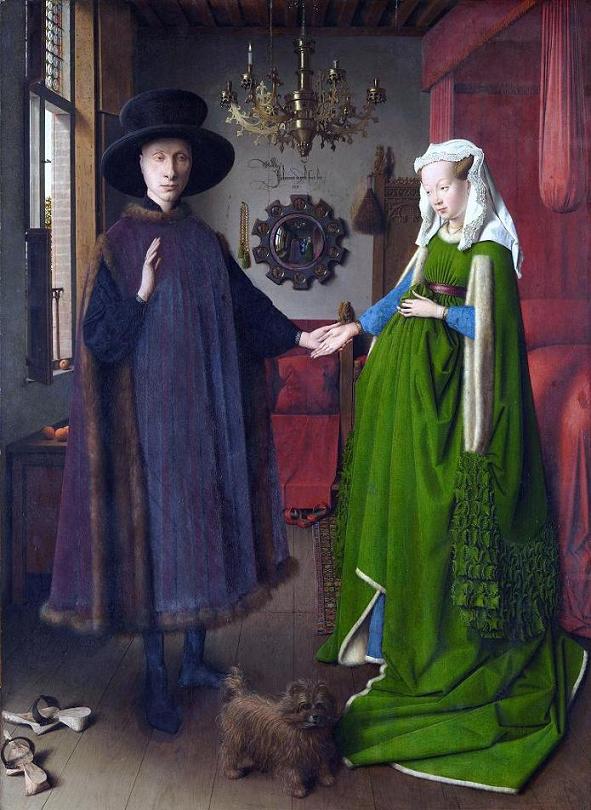
LIFE AS MYTH
![]()
JOURNAL
![]()
JOURNAL 2008
![]()
Impressions at sunrise
Finding the inner muse
![]()
SUMMER 2008
Watershed art
![]()
LIFEWORKS
![]()
ATLAS
![]()

SUMMER 2008
MIRRORING A MARRIAGE
The Arnolfini Marriage by Jan Van Eyck is one of the masterpieces of Western art. Throughout this double portrait, Van Eyck employs a complex iconography to express medieval ideas on sex, procreation, domestic life, wealth, status and gender roles within the context of marriage.
Jan Van Eyck [c. 1395 - 1441], or Johannes de Eyck, was a Flemish painter, one of the finest artists of the 15th century and also known as the "father of oil painting". Though the use of oil-based painting predates Van Eyck by several centuries, Jan and his brother, Hubert, were the earliest to use it for panel painting and to create extraordinary effects through the mastery of glazes, wet-on-wet and other painterly techniques.
The earliest source on Van Eyck is a biography [1454] by Bartolomeo Facio. He describes the painter as one of the best artists of the 15th century and an educated man grounded in the classics. The earliest official record of Van Eyck is as court painter for John of Bavaria in 1422. At the death of John, Van Eyck moved to the court of Duke Philip the Good of Burgundy. His primary surviving work from this time is in the Turin-Milan Hours, an extravagantly illuminated manuscript which contained not only a book of hours but a prayer-book and missal as well. By 1479 a section of the manuscript belonged to the House of Savoy who gave it to the National Library in Turin in 1720. That manuscript, along with Van Eyck's illuminations, were lost during a fire in 1904.
Duke Philip held Van Eyck in high regard, paying him a sizeable salary when he first entered his court. Within a short period of time that original salary doubled twice and Van Eyck also received special bonuses. His salary alone sets him apart from other painters of this period since most depended on commissions for their survival. The Duke became godfather to one of Van Eyck's children, supported his wife when Van Eyck died, and provided the necessary financial assistance for one of his daughters to enter a convent.
The Arnolfini Marriage. Jan Van Eyck. 1434. National Gallery, London. Also known as The Arnolfini Wedding, The Arnolfini Double Portrait or the Portrait of Giovanni Arnolfini and his Wife.

